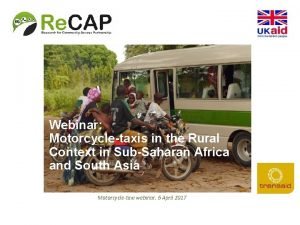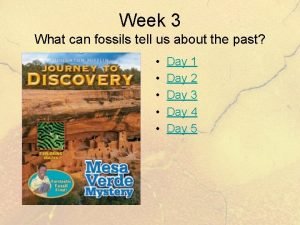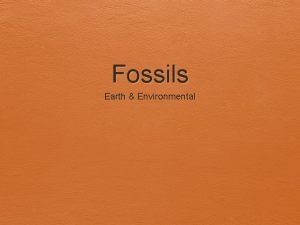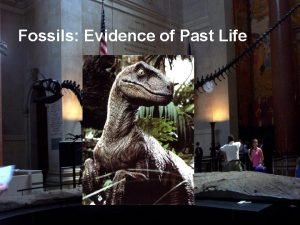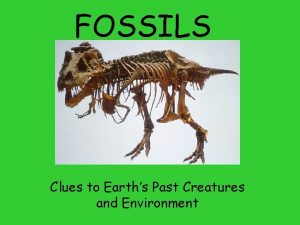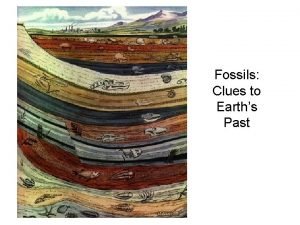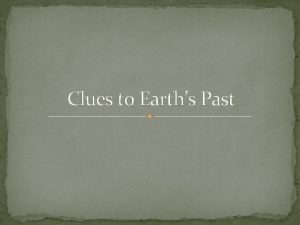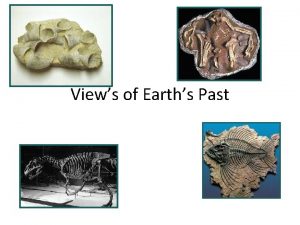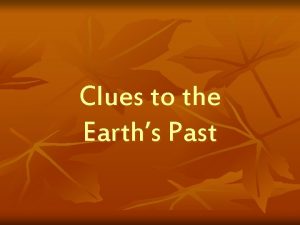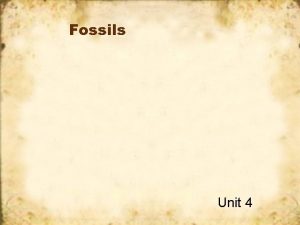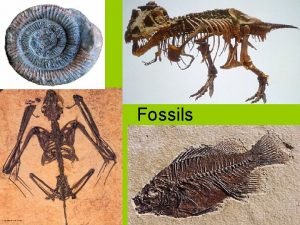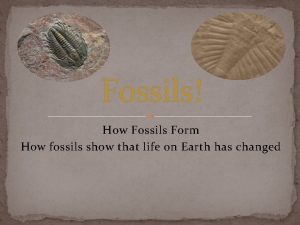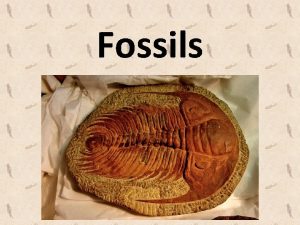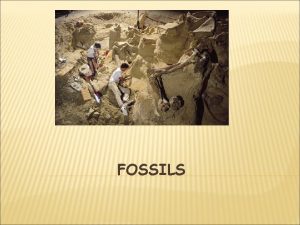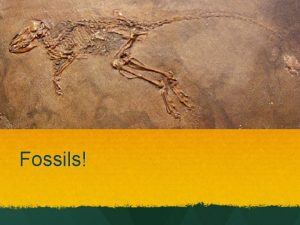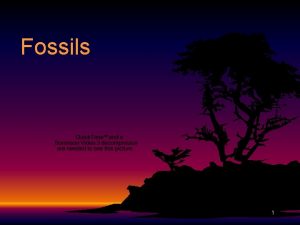Chapter 9 Clues to Earths Past Fossils Section
















- Slides: 16

Chapter 9 Clues to Earth’s Past

Fossils

Section 1: Fossils n The remains, imprints or traces of prehistoric organisms n Remains of dead plants and animals disappear quickly because of scavengers and decomposers

Fossils (continued) n n n To become fossils, organisms should be buried quickly Have hard parts, such as bones, shells, or teeth Tissues disappear quickly

Types of Fossils

Mineral Replacement n n Tiny spaces inside hard parts of organisms decay Minerals from groundwater fill spaces n n Permineralized Remains Preferred method because original materials are conserved n DNA can sometimes be recovered

Mineral Replacement

Carbon Films n Thin film of carbon residue forms a silhouette of the original organism

Coal n n n Deposits of plant matter accumulate and are completely carbonized into coal over millions of year Structure of the plant is lost Unreliable for identification

Molds and Casts Impressions form when hard-shelled organisms fall into a soft substance n Object is buried by more sediment n Compaction and cementation turns sediment into rock n

Molds and Casts (cont. ) n n Hard parts decay or dissolve leaving behind a cavity called a mold Later mineral-rich water or sediment enters the cavity and forms new rock n Produces a copy or cast of the original object

Molds and Casts

Original Remains n n n Insects are trapped in a hardened substance Examples include amber, resin, ice, or tar Original tissue (soft parts) are preserved

Trace Fossils n n n Fossilized tracks and other evidence of the activity of organisms Sometimes can tell you more about how an organism lived than any other fossil. Can include worm trails and other animal trails

Index Fossils n n The remains of species that existed on Earth for short periods of time, were abundant, and were geographically widespread Geologists can estimate ages of rock layers based on the index fossils contained in the rock

Fossils and Ancient Environments n Fossils can be used to: n n Determine the environment of an area long ago Depth of water (ocean environment) Past Climate of a region Provide information about past life on Earth and history of rock layers that contain them
 Boda boda types of clues
Boda boda types of clues What can fossils tell us
What can fossils tell us Types of fossils
Types of fossils What 2 things make a good index fossil
What 2 things make a good index fossil Fossils evidence of past life
Fossils evidence of past life Chapter 21 fossils and the rock record answer key
Chapter 21 fossils and the rock record answer key Earths layer foldable
Earths layer foldable Earths roation
Earths roation Whats a natural satellite
Whats a natural satellite Biome near the equator
Biome near the equator Periodic table of elements families
Periodic table of elements families Plasticity in earth's layers
Plasticity in earth's layers Whats earths moon called
Whats earths moon called What is earths thickest layer
What is earths thickest layer Earths early atmosphere contained
Earths early atmosphere contained The earth's layers foldable
The earth's layers foldable Earths major crustal plates
Earths major crustal plates
